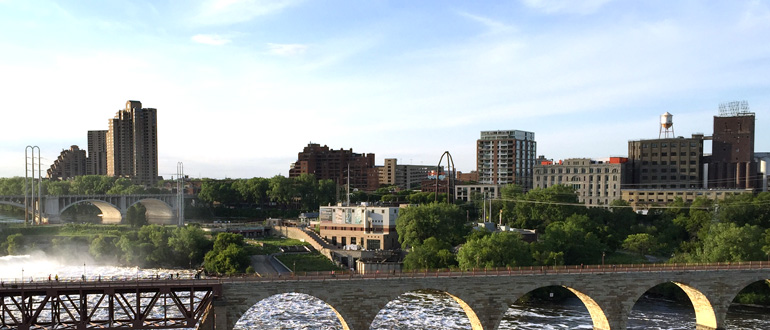It was so great to be back at Eyeo after two years! Compared to my last trip, it felt slightly different. There was a lot more diversity, not only in the speakers’ backgrounds and talks, but also in the attendees. The conference felt even truer to its spirit of “bringing together artists, creative coders, data visualizers, open source instigators and makers for an extraordinary festival.” Even if I wanted to, I couldn’t summarize all my thoughts about all the talks I went to. There is so much to process it’s quite overwhelming! Here’s a snapshot of some thoughts on selected talks:
Giorgia Lupi and Stefanie Posavec kicked off the conference with a talk on “Dear Data”, a year-long collaborative dataviz project, where they both mail a postcard every week with pencil sketches of data collected for that week’s theme. It was fascinating to see the individual styles and patterns of each data artist emerge in their postcards, apart from the really cool (and sometimes personal) data that they shared.
As someone who is obsessed with depth cameras and sensing technologies of all kinds, I thoroughly enjoyed James George’s talk focused on the future of imaging technology. I really liked the glitchy aesthetic and narrative of Depth_Editor_Debug and the fact that they open sourced the toolkit used to augment high definition video with 3D depth data. Some other cool projects he talked about were Postcards from Google Earth by Clement Valla (super weird results that emerge from glitches in Google Earth’s texture mapping algorithm), and the beautiful, 3D laser scanned sculptures by Sophie Kahn.
Chris Sugrue’s talk was a great insight into her process of combining play and curiosity with optical illusions and artificial life, with projects like Delicate Boundaries (small bugs crawl out of computer screen and onto the user’s hand) and Base 8 (super clever pepper’s ghost illusion to project forms in negative space between hands and fingers). Similarly, it was educational to hear Meejin Yoon talk about her interactive public space projects like Swing Time (ring shaped swings illuminated to respond to activity), Aviary (inhabitable audio-visual environment), and Double Horizon (light piece that responds to movement of vehicles through the San Ysidro Land Port of Entry). Her response to how and why people play with and break her installations in public was also quite interesting: “Once the project is in public space, it is no longer mine. It belongs to the public.”
Jessica and Jesse from Nervous Systems talked about patterns in nature and differential growth simulations, and their latest project — custom fit, intricate 3D printed dress that is, for lack of a better word, insane! They also showed a website where people could design these dresses to crazy level of detail and customization, which I’m guessing would be a part of their Kinematics App in the future.
Eva Franch talked about the Storefront project (a sidewalk-gallery that is constantly updated with new art installations) and its many incarnations, while running out of time (honestly I could hear her talk all day, her work is so amazing)! Something she said that I found quite profound: “Architecture is slightly behind time. Art is of the time. Poetry is ahead of time.”
Harlo Holmes and Ingrid Burlington both had a very cyberpunk vibe to their work, which says something about the future we live in now. Harlo is a software developer who deals with cyberbullying, digital redlining and the politics of cyberfeminism. She talked about neighborhoods, identities and how people have a lot more to their personalities than their digital imprints. Ingrid comes off as a hybrid hacker/investigative journalist who studies the physicality of network infrastructures and surveillance geography. She talked about mapping submarine cable taps, seeing networks and time travel among other things.
Instead of going into more details about other speakers, I’ll leave you with some links that I found cool/weird/interesting from some of the talks:
- NYPL Labs: NYC SpaceTime Directory
- Yuri Suzuki: Musical Kettle, Okinawa Melody Road
- Micah Elizabeth Scott: Forest
- Kawandeep Virdee: BloopDance (phone browser + headphones!)
- Mario Klingemann: The Internet Archive’s Map of Book Subjects







